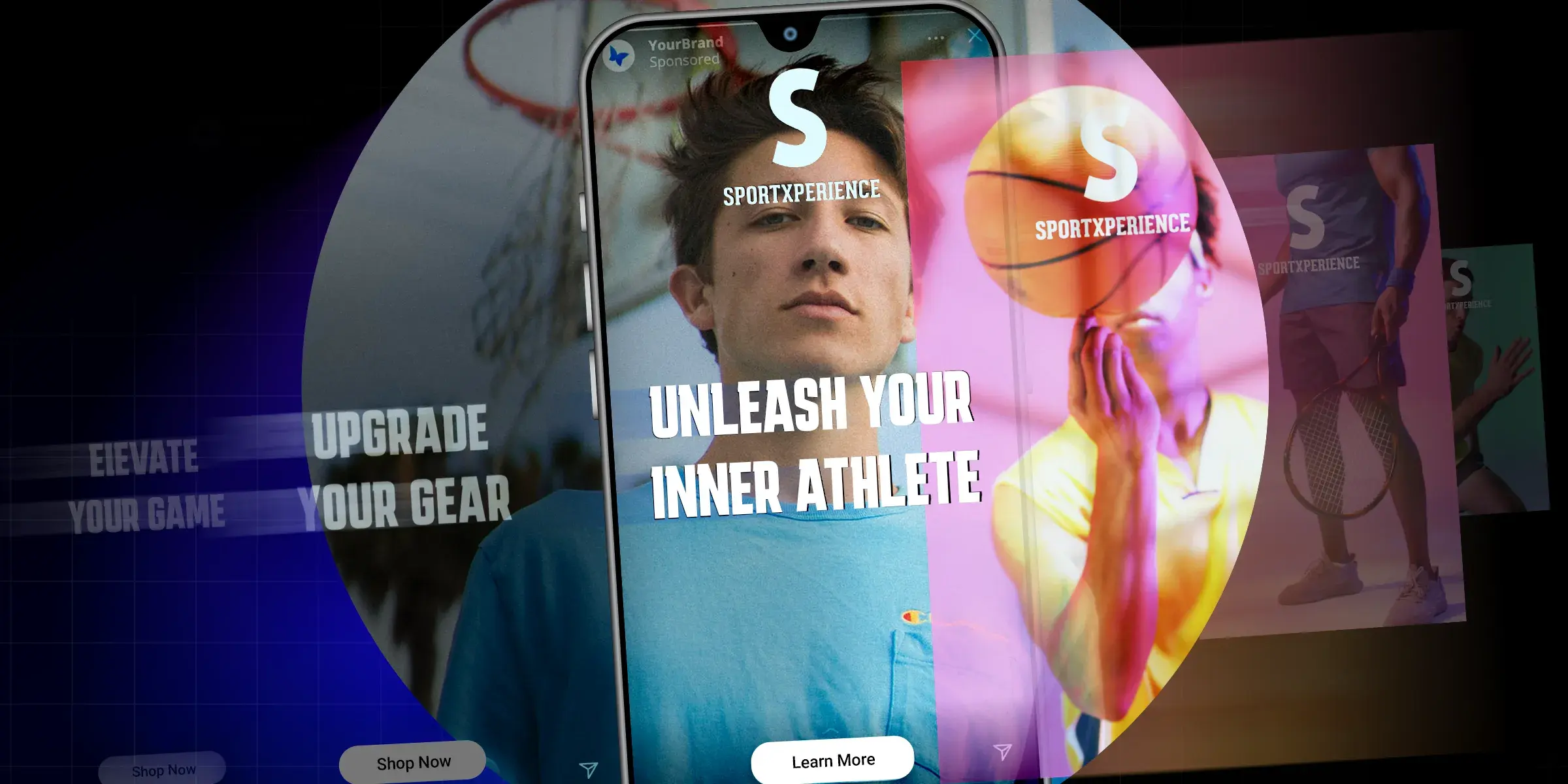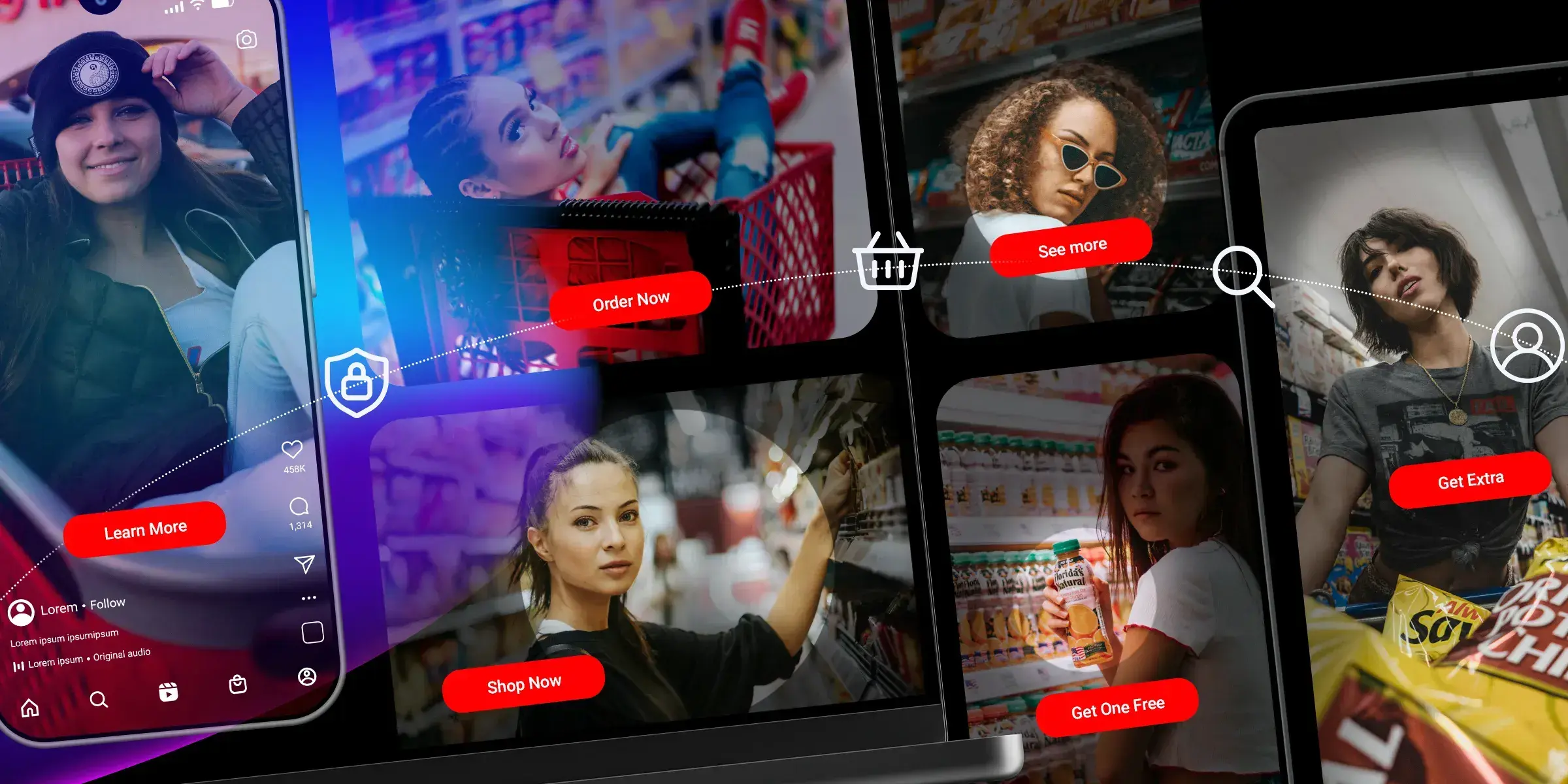As we traverse the digital marketing landscape, it's hard to ignore the growing emphasis on personalisation and real-time responsiveness in advertising. One tool that stands out in enabling this shift is Dynamic Creative Optimisation (DCO). Today, let's pull back the curtain on DCO, dive deep into its mechanics, and explore its transformative impact on your marketing strategies.
What is Dynamic Creative Optimisation?
Dynamic Creative Optimisation, or DCO, is a display ad technology that allows for the real-time personalisation of advertisements. Leveraging user data, DCO tailors the content, appearance, and call-to-action of ads to align with individual users' profiles and interests.
To paint a clearer picture, consider you're an online book store. With DCO, you can show a user who has been browsing mystery novels an ad featuring the latest thriller, while another user, who prefers biographies, sees an ad for a newly released memoir. This level of personalisation takes the guesswork out of advertising, ensuring that your ads are pertinent and appealing to each unique viewer.
How does Dynamic Creative Optimisation Work?
At the heart of DCO is data-driven marketing. It utilises Artificial Intelligence (AI) and Machine Learning (ML) algorithms to scrutinise a wide range of user data, such as browsing history, demographic information, geolocation, device type, and time of interaction.
The DCO process begins with the deconstruction of an ad into its fundamental elements – think headlines, images, body copy, background colours, and call-to-action buttons. These elements are stored in a creative library. As a user interacts with the internet, their data is analysed in real-time. Based on the insights derived, the most relevant elements are then pulled from the library, assembled, and served as a personalised ad. This entire process, remarkably, happens in just fractions of a second.
The Value Dynamic Creative Optimisation Brings to Your Campaigns
In 2022, the average American saw between 4,000-10,000 ads per day! An incredible amount of ads for any one person but even more reason for brands to figure out how to stand out from the noise. This is where DCO offers several advantages that significantly enhance the effectiveness of your digital campaigns:
- Highly Personalised Ads: The primary benefit of DCO lies in the high degree of personalisation it offers. By serving ads tailor-made to match user preferences and behaviour, DCO boosts ad relevance, improving the overall user experience.
- Operational Efficiency: With DCO, there's no need to manually create multiple versions of an ad for different audiences. The technology does the heavy lifting, automatically generating a myriad of ad variations, saving your creative team valuable time and resources.
- Real-time Adaptability: DCO responds to changes as they occur. If a user's behaviour or preferences change, the system can instantaneously adjust the ad content, ensuring that the ad remains relevant.
- Improved Performance Metrics: By serving highly relevant and personalised ads, DCO can enhance your engagement rates, click-through rates (CTR), and ultimately, drive higher conversion rates, leading to a better Return on Investment (ROI).
As you can see when done correctly the benefits of DCO are exponential, through a mixture of Artificial Intelligence and Machine Learning you can make sure you create ads that capture attention whilst being hyper-relevant to your target audience.
Let's take a look at how these technologies enable DCO.
The Role of AI and ML in Dynamic Creative Optimisation
DCO owes much of its power to advancements in AI and ML. AI enables the system to process vast amounts of data swiftly and efficiently, while ML allows the system to learn from past user interactions, continuously improving its ad selection over time. This symbiotic relationship means that the more data DCO processes, the more accurate and effective it becomes.
AI and ML also allow DCO systems to run A/B testing on a grand scale. Different combinations of ad elements can be served to different users, and the system can learn which combinations perform the best. This continuous learning process helps to optimise ad performance over time, ensuring that your ads always deliver the maximum impact.
Here are a few of the ways that AI and ML enable DCO to function to its full potential.
- Data Collection and Analysis
AI and ML have the capacity to collect and process massive amounts of data at an astonishing pace. They can analyse everything from a user's browsing history, social media interactions, purchase history, to even their geographic location. This data is invaluable to DCO as it provides detailed insights into individual consumer behaviors, interests, and patterns.
- Real-Time Adaptation
The power of ML lies in its ability to learn and adapt over time. In the context of DCO, this means that ML algorithms can monitor user reactions to advertisements, learn from their behaviours and preferences, and dynamically modify the creative components of the ad. This could include changing the ad's color scheme, call to action, layout, or any other element, all in real time.
- Personalisation
By using AI and ML, advertisers can ensure that their ads are not only targeted but also personalised. AI systems can generate hundreds of creative variations from a single ad, each designed to appeal to a specific user profile. From customising the visuals and messaging to selecting the most effective time and platform for delivery, AI helps create a more personalised and engaging experience for each user.
- Predictive Analysis
AI and ML can use the gathered data to predict future consumer behaviour. These predictions can help marketers create a more effective DCO strategy. By knowing what a customer is likely to do, marketers can anticipate needs and deliver the right message at the right time.
Embracing the Future of Advertising with DCO
With the rise of big data and AI, the advertising landscape is shifting from a one-size-fits-all approach to a highly personalised one. As we move forward, understanding and effectively implementing DCO will be key to staying competitive in the digital marketing space.
One key thing to consider is how you can start incorporating first party data into your MarTech stack. In 2024, the digital advertising landscape will undergo a significant transformation with the phasing out of third-party cookies.
Third-party cookies, which are small pieces of data stored on users' browsers by websites other than the one they were visiting, have long been instrumental in tracking users' online behaviour for targeted advertising purposes. However, growing concerns over privacy and data security led to their gradual demise.
The move to phase out third-party cookies was a response to mounting public pressure and evolving regulations aimed at safeguarding individuals' online privacy. With an increasing number of users becoming aware of how their personal information was being tracked and utilised, the demand for greater transparency and control over their data grew louder.
This paradigm shift forces advertisers, publishers, and technology companies to seek alternative solutions for audience targeting and measurement using first party data.
First-party data, which is collected directly from users with their consent, offers an opportunity for advertisers to build more meaningful and personalised relationships with their audience. Brands and publishers will need to invest in building stronger direct relationships with users through initiatives such as loyalty programs, newsletters, and personalised experiences.
Whether you're a marketing professional, a small business owner, or just starting your digital marketing journey, DCO provides a powerful tool to deliver meaningful, impactful ads to your target audience. By leveraging user data and real-time responsiveness, DCO brings you closer to your audience, driving engagement, and fostering brand loyalty.
If you're keen on exploring DCO for your marketing campaigns and could use professional guidance, don't hesitate to get in touch.
Stay tuned to our blog for more insights on digital marketing trends and tools that can help your business thrive.
.jpg?width=2560&height=853&name=In-Blog-banner%20(2).jpg)








